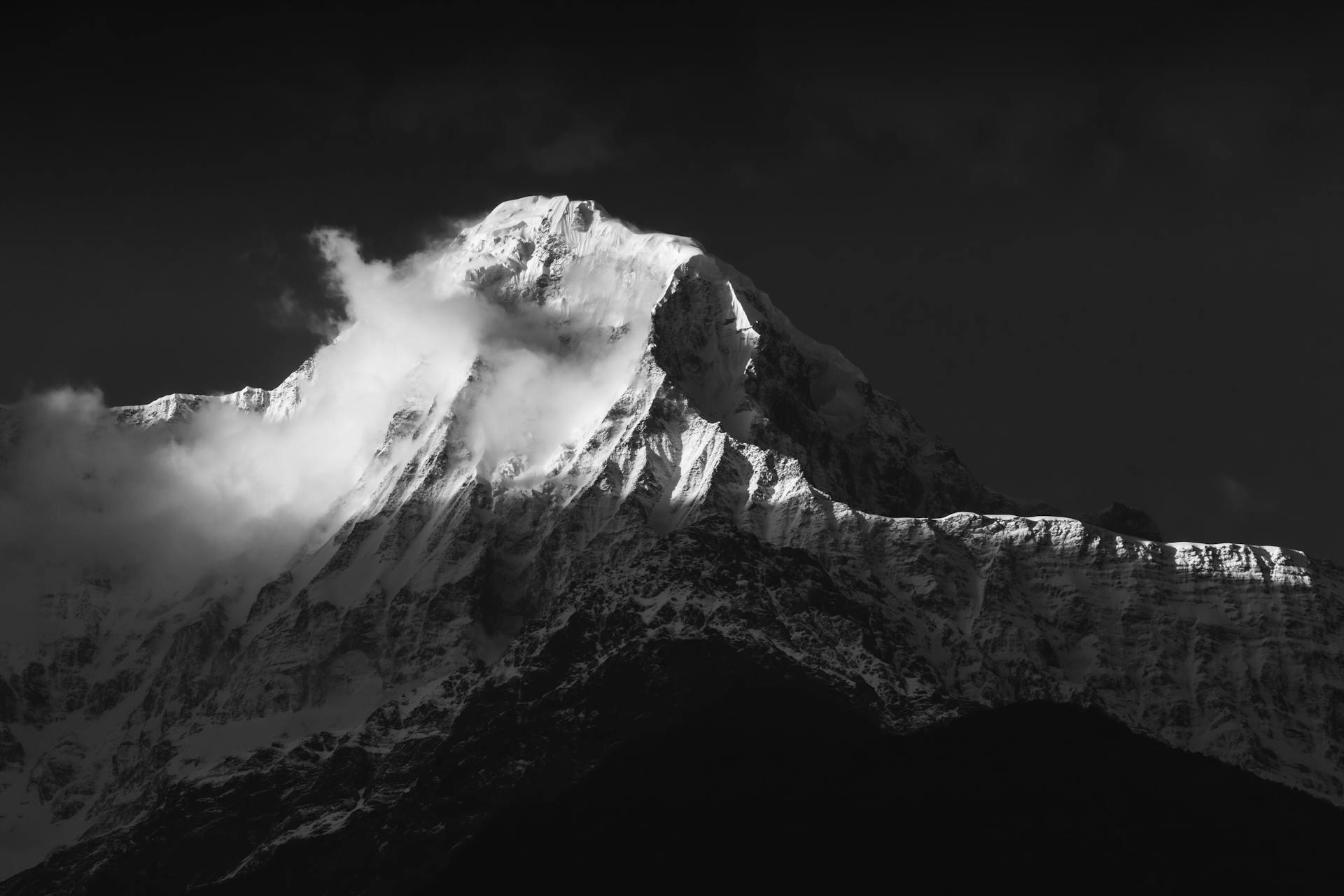The Earth's highest mountains have long captured the imagination of adventurers, explorers, and nature enthusiasts alike. Towering above the clouds, these majestic peaks represent some of the most challenging and awe-inspiring natural wonders on the planet. From the legendary Mount Everest to the lesser-known but equally impressive K2, the seven highest mountains in the world stand as testaments to the raw power and grandeur of our planet.
Let’s explore the most impressive peaks in the world and learn more about their history and geography!
| Mountain | Elevation (meters above sea level) | Country | Mountain Range |
|---|---|---|---|
| Mount Everest | 8,848 | Nepal, China | Himalayas |
| K2 (Godwen Austen) | 8,611 | Pakistan, China | Karakoram |
| Kangchenjunga | 8,586 | India, Nepal | Himalayas |
| Lhotse | 8,516 | Nepal, China | Himalayas |
| Makalu | 8,485 | Nepal, China | Himalayas |
| Cho Oyu | 8,188 | Nepal, China | Himalayas |
| Dhaulagiri I | 8,167 | Nepal | Himalayas |

The Highest vs Tallest vs Biggest vs Farthest from the Center of the Earth
Did you know that there are three different metrics that people use to determine the tallest mountain peak in the world? Depending on which metric you’re using, you’ll get a different answer! So, what are these different measurements, what do they mean, and why do people use them?
Highest
Highest refers to the peak that is at the highest altitude above sea level.
This is the measurement you’re probably thinking of when we say “tallest mountain in the world”!
This is because we typically assume that all mountains start at the same base elevation. But think about this: If a 4ft-tall person is standing on a 10ft-tall ladder, and a 6ft tall person is standing on the ground, the 4ft-tall person’s head will be above the 6ft-tall person’s head, making them appear taller if you only measure how high their heads are above the ground.
Mountains are similar: not every mountain begins at the same base elevation, so even though a mountain may be higher, it might not be the tallest.
Tallest
This measurement refers to the actual height of a mountain (called the Prominence).
To go back to the previous example, the 4ft-tall person on the ladder would still be considered shorter than the 6ft-tall person because you’re only measuring the actual height of the person, not counting the ladder.
Some extremely tall mountains are actually located underwater, with their base at the bottom of the ocean!
Mauna Kea, a long-dormant volcano in Hawaii, USA, is the tallest mountain in the world from base to peak, measuring approximately 10,205m (33,481 feet) in height, surpassing the height of Mount Everest at 8,849m (29,032 feet). More than half of Mauna Kea is submerged beneath the Pacific Ocean.
Farthest from the Earth’s Center
Earth is not a perfect sphere. Because of the spin of the planet, the equator actually bulges out slightly, meaning sea level at the equator is further away from the center of the Earth than sea level at the poles.
So, mountains located near the equator may be farther away from the Earth’s center than shorter mountains located away from the equator. It’s like equatorial mountains are on a ladder!
Mount Chimborazo's peak
Mount Chimborazo's peak is the farthest point on Earth from the planet's center, exceeding the elevation of Mount Everest's summit by over 6,800 feet [2,072 meters]. Mauna Kea is the tallest mountain measured from base to peak, standing at more than 33,500 feet [10,210 meters].
Bonus: Biggest
This last measurement refers to the size of a mountain’s base. Mountains with enormous bases may not necessarily rise up very high. Think of Mt. Fuji in Japan; of course it’s a huge mountain, but its slopes are not nearly as steep as other mountains, so although it's enormous, it isn't very tall compared to many other mountains.
7 Highest Mountains in the World
Most of the world’s highest mountains are located in and directly near the Himalayas. This is because the Indian tectonic plate and the Eurasian tectonic plate crashed into each other about 40-50 million years ago. The collision caused the edges of the plates to crumple upwards, forming mountains (part of the plates crumpled downward towards the Earth’s core as well).
All of the top 188 highest mountain peaks in the world are located in Asia!
The tallest mountain located outside of Asia is Aconcagua in Argentina at 6,961 m above sea level.
So, although there are other examples of extremely high mountains elsewhere in the world, the collision between the Indian and Eurasian plates was simply powerful enough to create multiple large mountains in one go, and the conditions of the Earth were favorable in this area to allow these elevated peaks to form and stay without toppling over.
So, what are these mountains and what are their elevations?
1. Mount Everest
Of course, as you probably already know, Mt Everest is the highest mountain peak above sea level on Earth.
It’s part of the Mahalangur Himalaya range in Nepal and Tibet/China, with one side of the mountain in each region. It currently stands at 8,849 m above sea level, but the height can increase and decrease by a few centimeters per year as the Earth’s plates (and other factors) fluctuate over time!
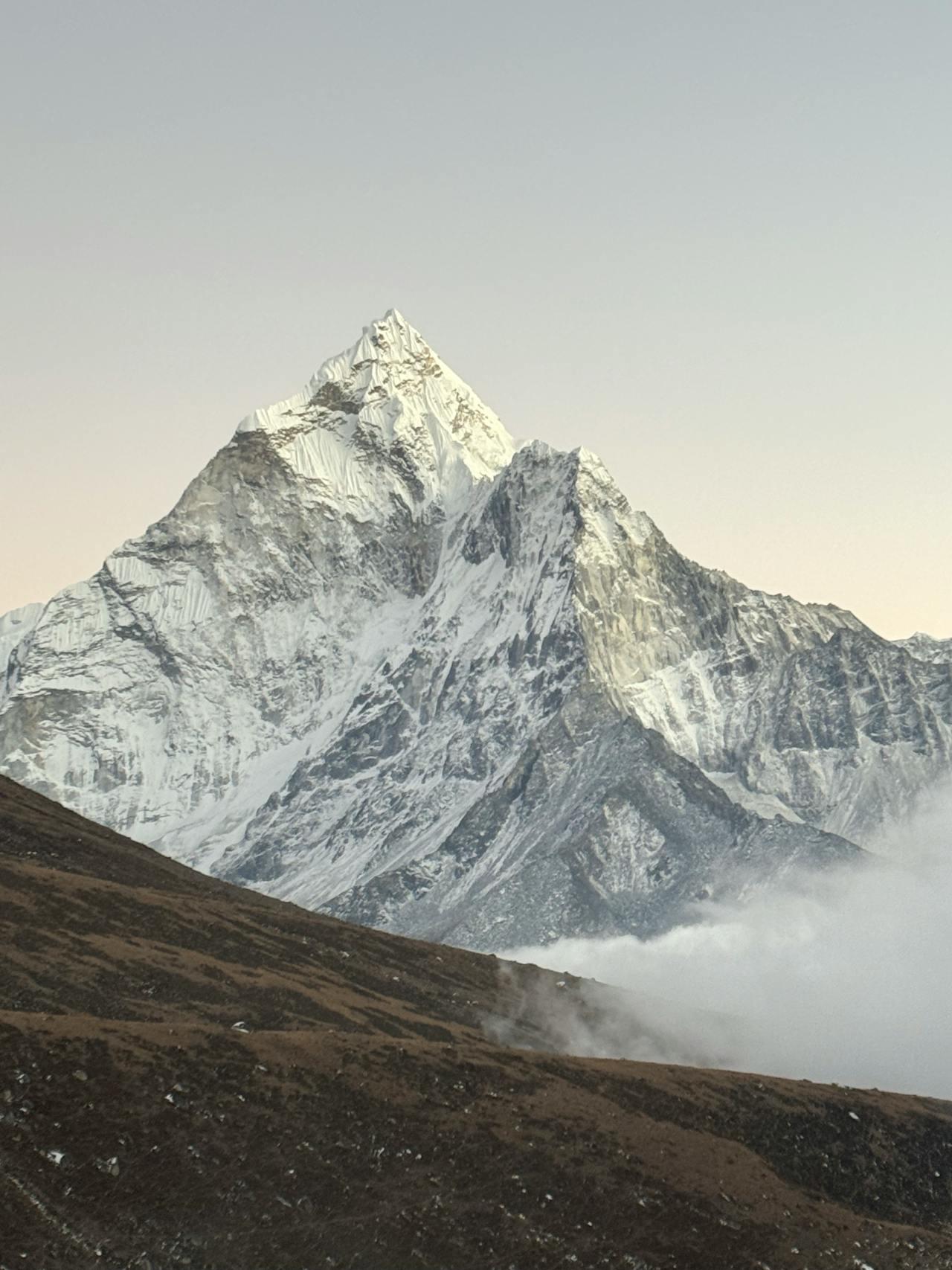
The local Tibetan name for Everest is Chomolungma, which means “Goddess Mother of the World.” In Sanskrit, it’s known as Sagarmatha, “Peak of Heaven.”
2. K2 (Godwen Austen)
In 1856, the second mountain in the Karakoram range was measured during the British-led Great Trigonometrical Survey of India. This mountain was given the nickname “K2” and even after being officially named Mount Godwin Austen, after the first surveyor to measure its dimensions, the name stuck.
In Chinese, it’s known as Qogir Feng, or is sometimes called “Savage Mountain.” It’s located in both Pakistan and China.
K2’s elevation is 8,611 meters above sea level.
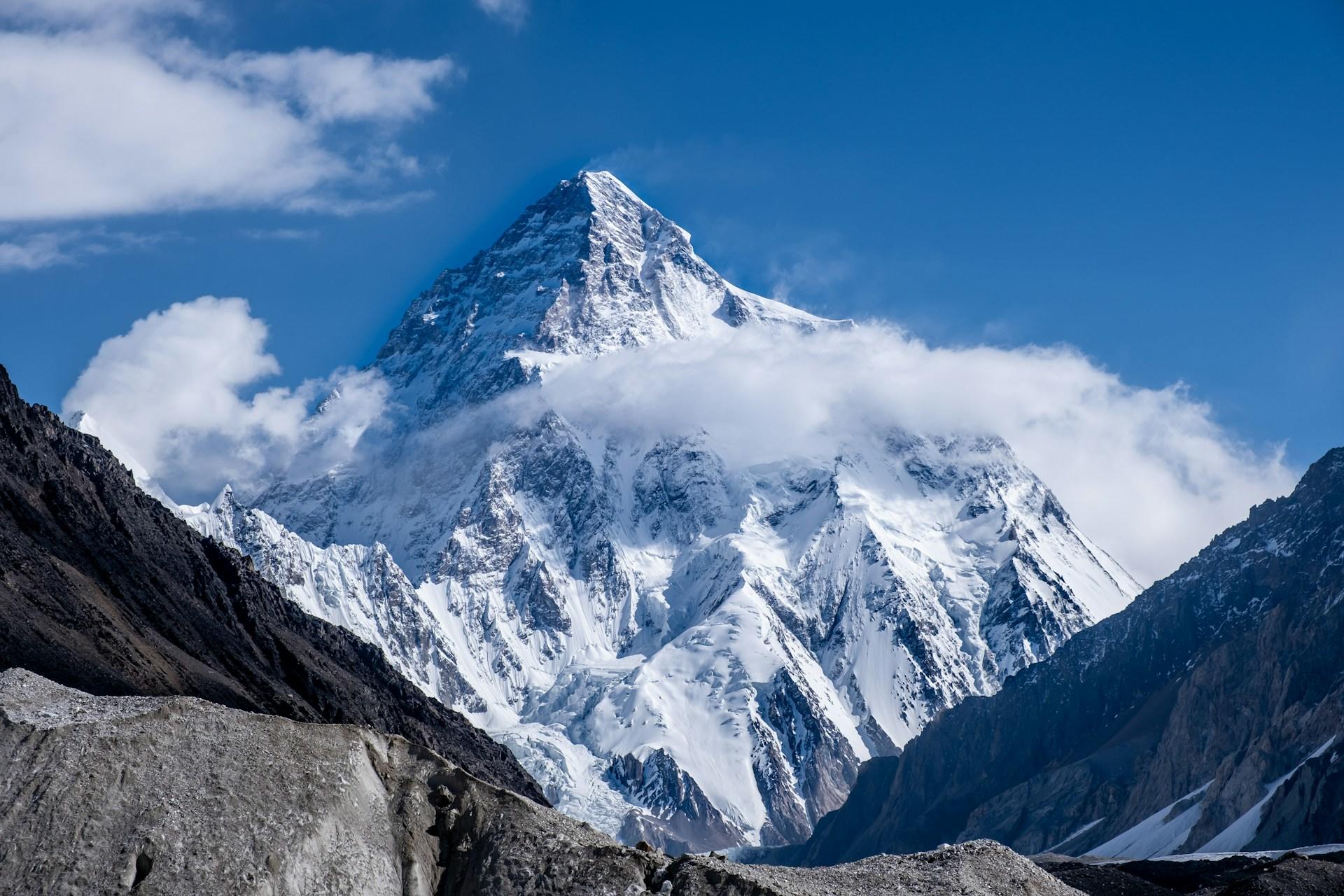
3. Kangchenjunga
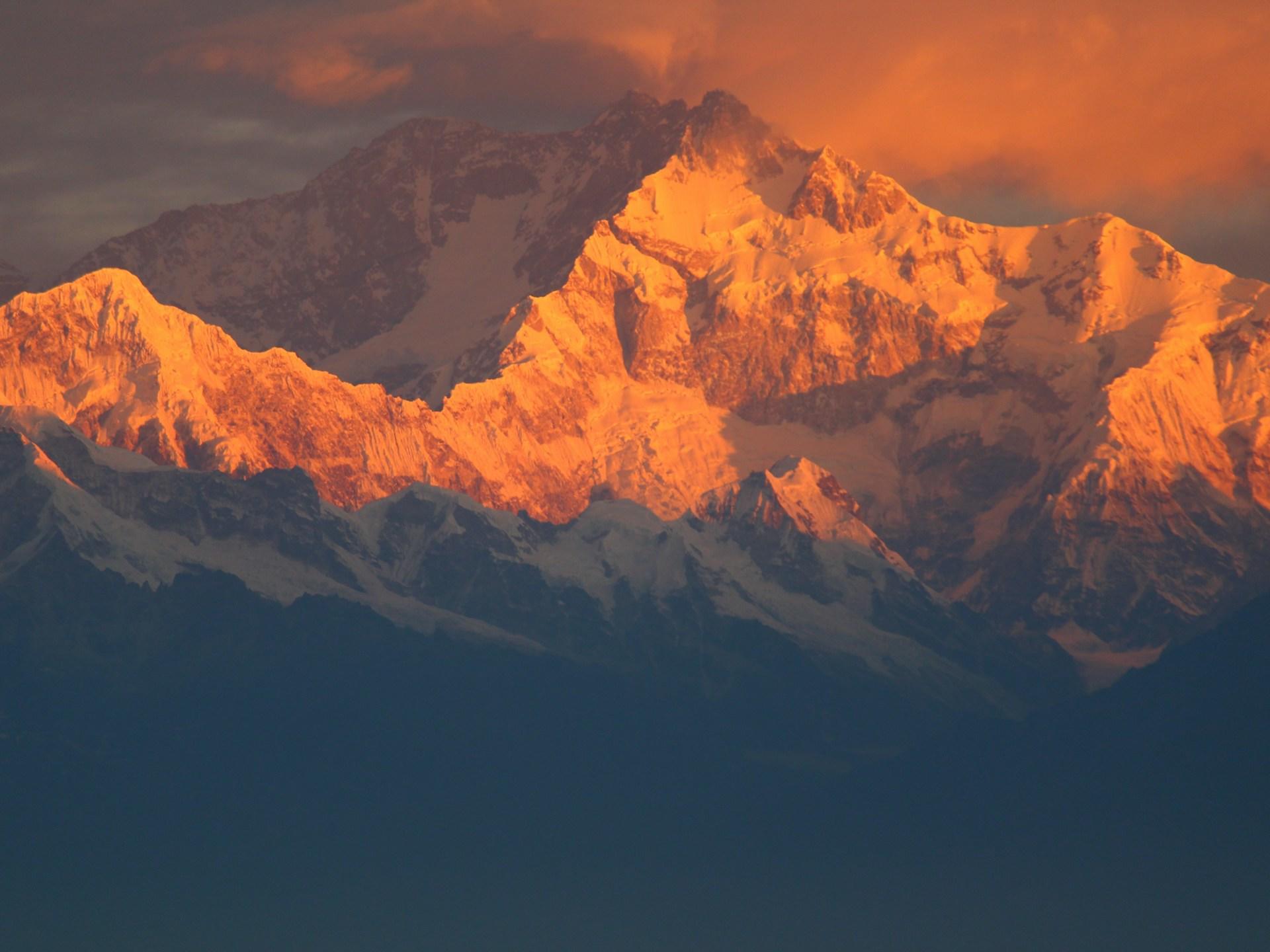
The multiple peaks of this great mountain span between Nepal and Sikkim in India, making it the highest mountain in India! It was believed to be the tallest mountain in the world until 1852 when Radhanath Sikdar completed the trigonometric survey of Everest and discovered the height of Everest.
The local Lhopro people pronounce the name more like “Khangchendzonga,” which means “The five treasures of the high snow" and refers to the five distinct peaks. The name may also refer to treasures that are said to reveal themselves when the world is in peril, such as precious stones, salt, armor, grain, and medicine.
The peak sits at 8,586 meters above sea level and is banned for tourists, as it’s a holy site for Buddhists.
In 1925, a British expedition team reported seeing a bipedal creature that the locals called Dzö-nga or the "Kangchenjunga Demon.” It’s believed that this creature is a type of yeti or rakshasa and lives somewhere on and around Kangchenjunga.
4. Lhotse
Located close to Everest, Lhotse is often overlooked as simply a stepping-stone for climbers who want to bag the highest peak. It also looks smaller than it is because its prominence is lessened by the other towering peaks nearby, but in reality, it stands at an impressive 8,516 meters above sea level!
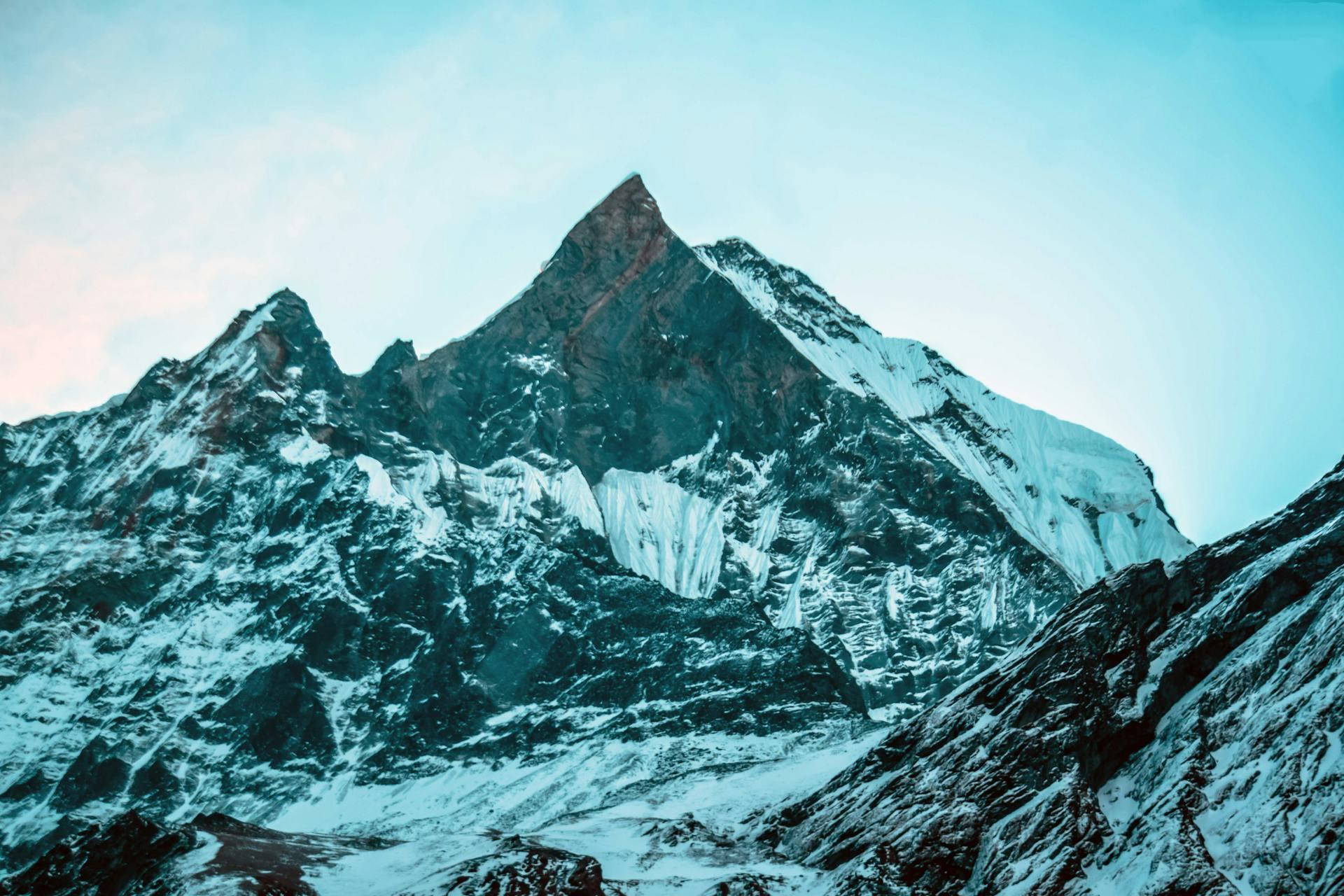
It is becoming a more popular destination for tourists and climbers, since it looks beautiful from far away and up close, and is less crowded than Everest.
5. Makalu
Rising up out of Makalu-Barun Valley and Makalu National Park, Mt. Makalu is another close neighbor of Everest. It is distinct due to its 4 sides, similar to a pyramid, and rises to 8,485 meters above sea level.
In 1955, the first successful climb to the summit was made with a team led by Frenchman Jean Franco, with Gyalzen Norbu as head Sherpa, and Kindjock Tsering as lead porter. In all, there were 11 climbers, 23 sherpas, and 315 porters. The result was a resounding successful trek, with all 11 climbers making it to the final summit and back safely.
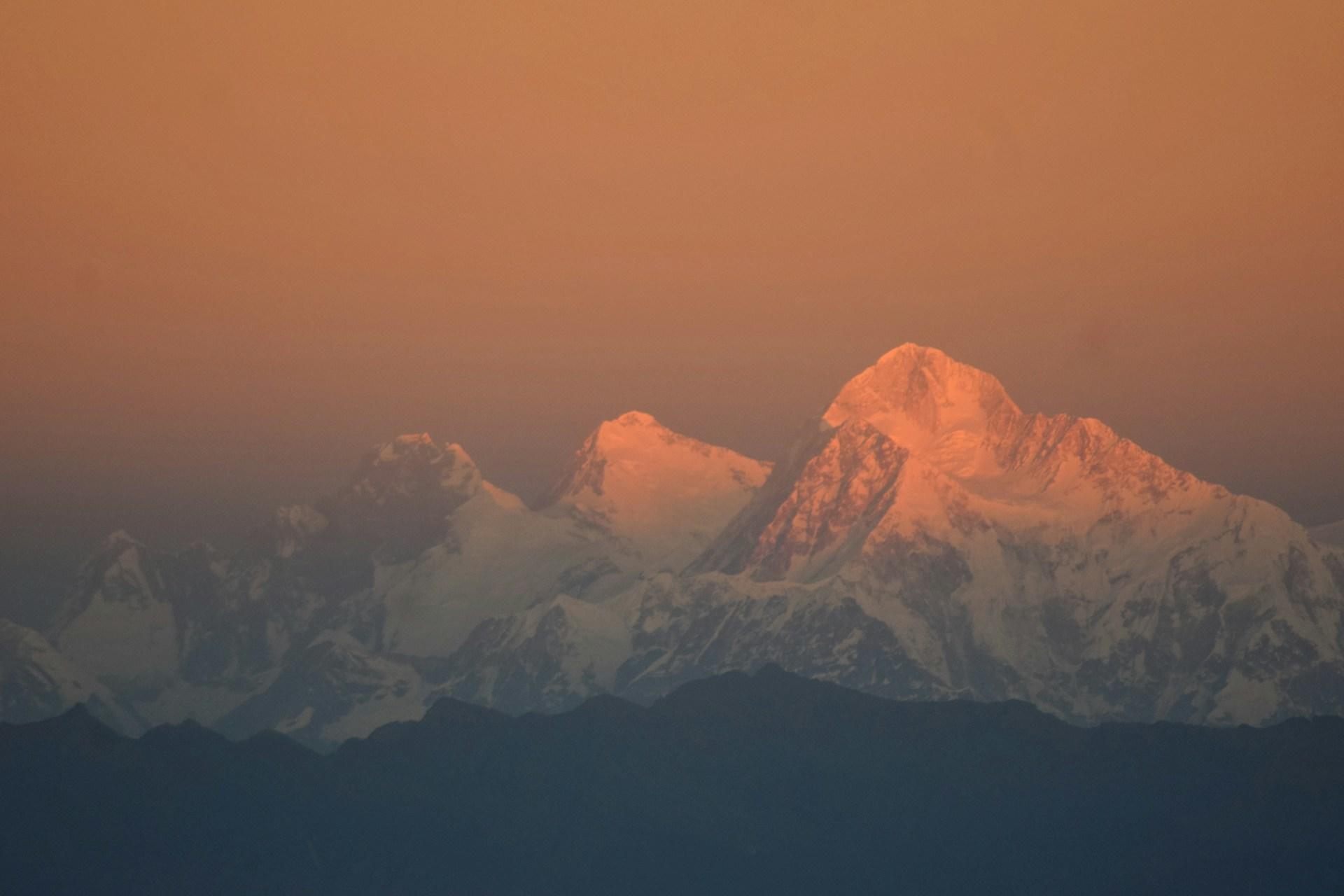
6. Cho Oyu
While also an impressive height (8,188 meters above sea level), the slopes of Cho Oyu are much more tame than the neighboring Himalayan mountains. The result is a more gentle hike which, while still taking weeks to accomplish, is typically more doable for most climbers.
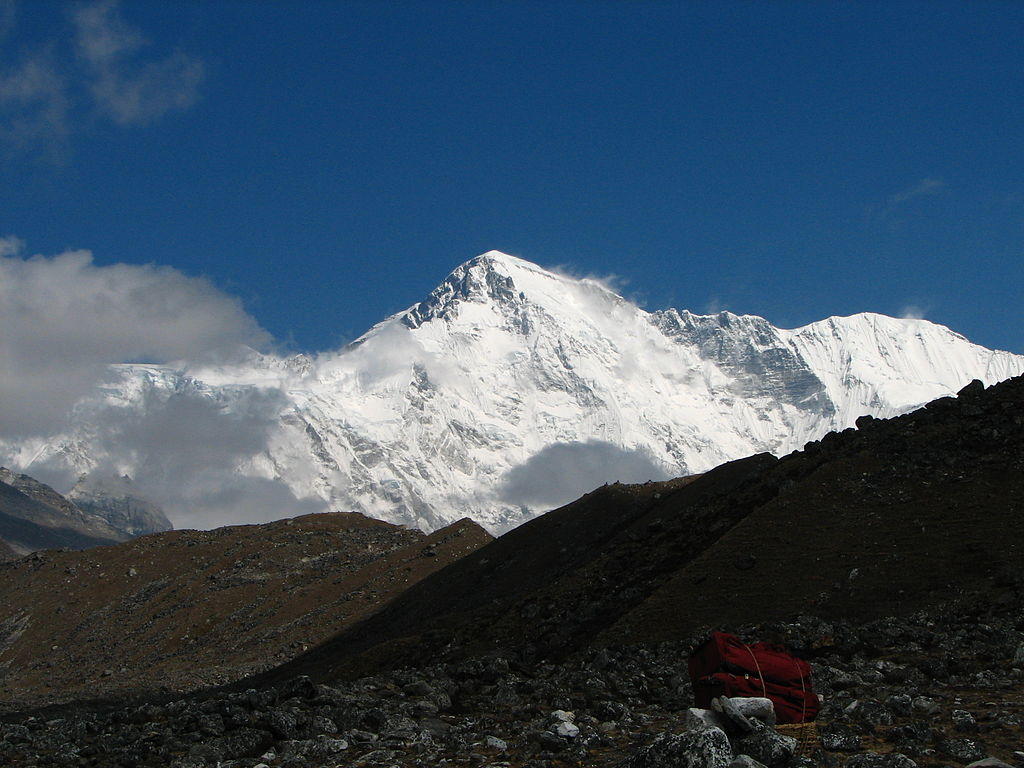
It has the lowest death-summit ratio of all the eight-thousanders (mountains higher than 8,000 m). It is the second most-climbed Himalayan mountain after Everest because of its safer and more realistic climb.
The name Cho Oyu means “turquoise Goddess” in Tibetan.
7. Dhaulagiri I
The Sanskrit word “dhawala giri,” meaning “dazzling white mountain” is the origin of the name of this mountain. It is located close to Annapurna I, which is the 10th-highest mountain in the world. Dhaulagiri has an extremely sharp face that rises 7,000 meters over the course of 30 kilometers from the Kali Gandaki River.
In total, Dhaulagiri rises to 8,167 meters above sea level and is a very challenging climb even for experienced climbers.
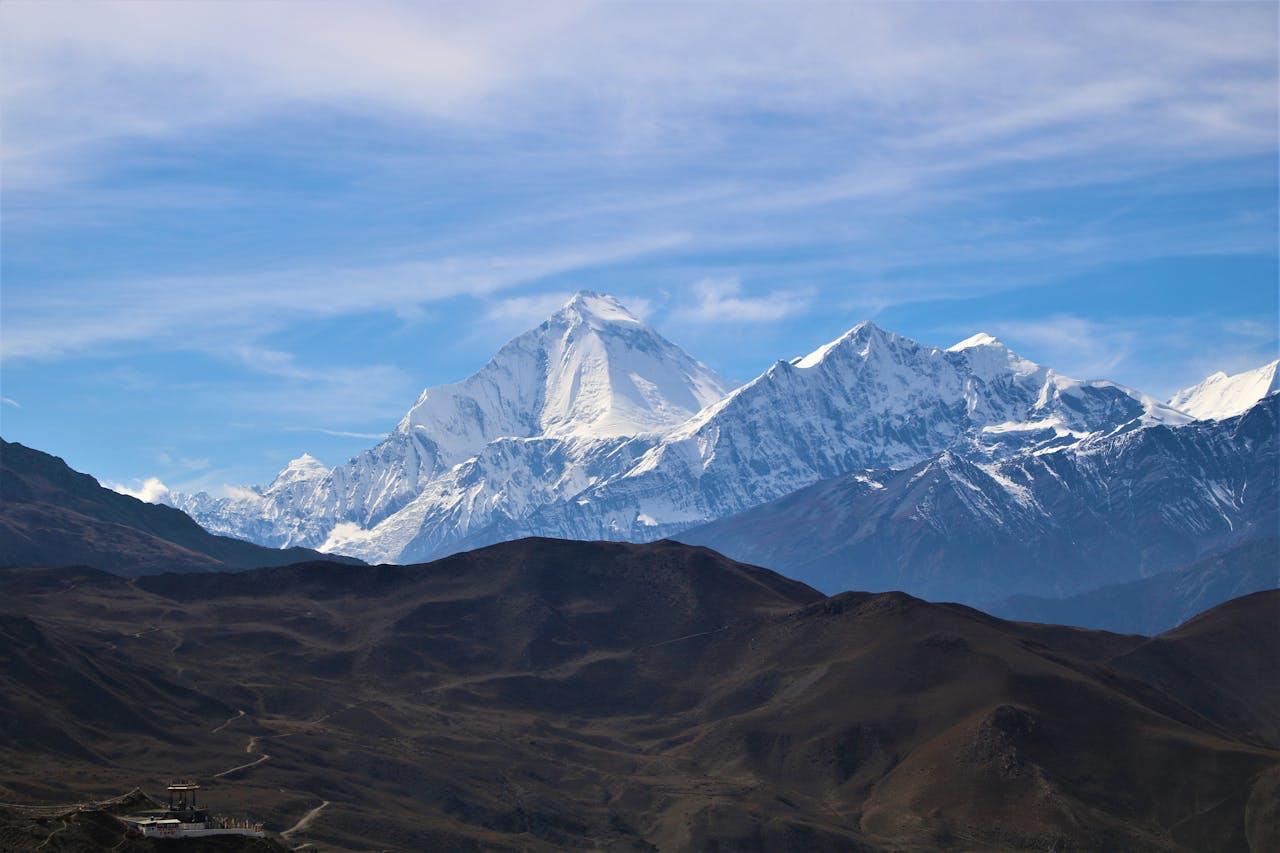

The Highest Mountains of Each Continent
The rest of the world sounds comparatively flat when you know that more than 100 of the tallest mountains in the world all reside in one region! However, each continent has its impressive peaks, even if they aren’t as skyward as the Himalayas.
Africa
The highest peak in Africa is Mt. Kibo of the Kilimanjaro range, located in Tanzania. It rises up to 5,895 meters above sea level.
Asia
Of course, you already know this one! It’s Mt. Everest!
Antarctica
In the neutral ground of the Antarctic, the highest mountain is the 4,892 ft-tall Mt. Vinson, located in the Sentinel Range.
Australia
The land down under may be the flattest area on Earth overall. Its highest peak is only 2,228 meters above sea level, which is Mt. Kosciuszko of the Great Dividing Range.
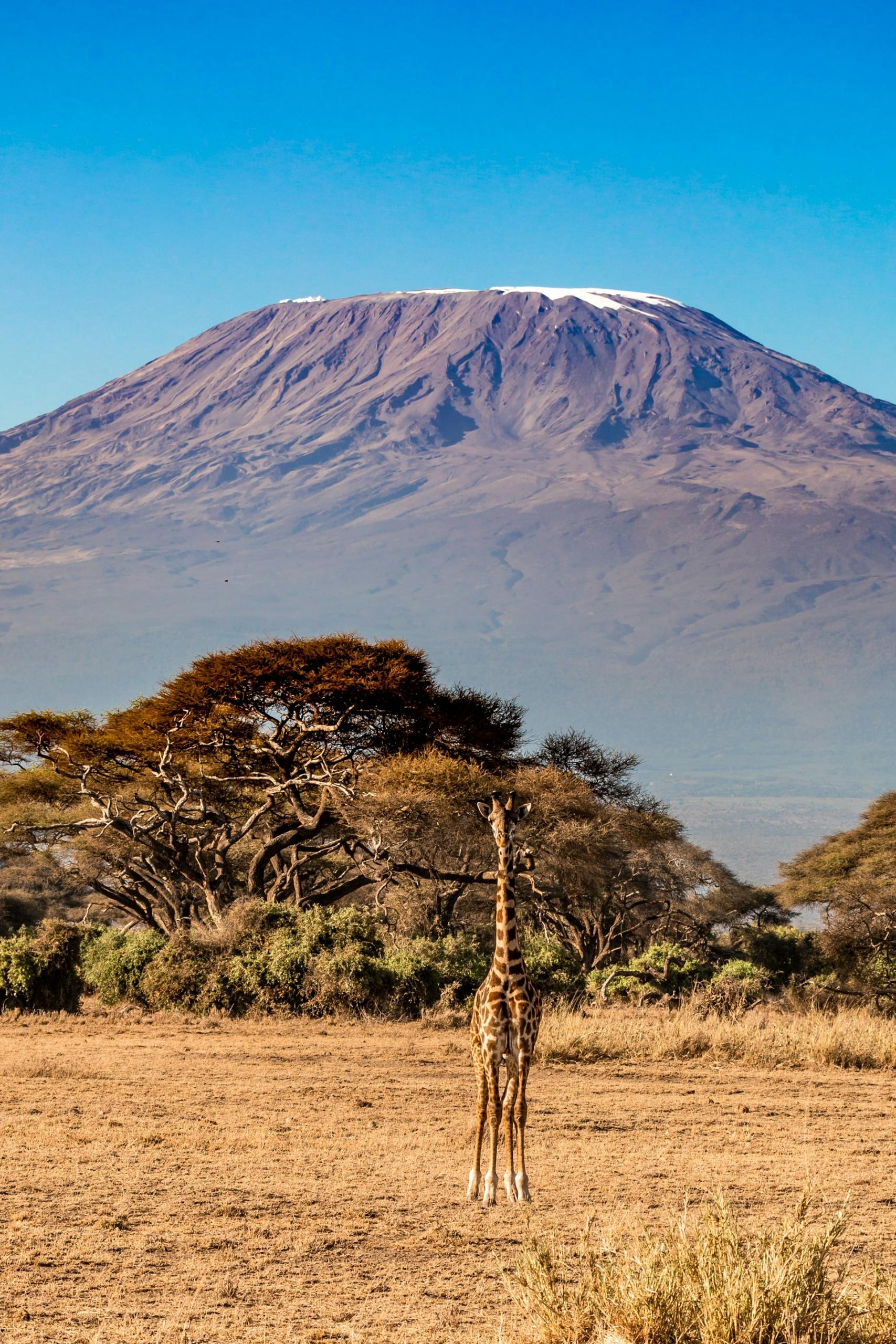
Europe
While much of Western Europe is relatively uniform, Eastern Europe is home to Mt. Elbrus, located in the Caucasus Mountains of Russia, which sits at 5,642 meters.
North America
In the frigid North of Alaska, USA, Mt. Denali (aka Mt. McKinley) rises up to 6,190 meters.
However, in Hawai’i, the tallest mountain when measured from base to peak sits within the big island. The base of Mauna Kea begins about 6,000 meters below sea level, on the ocean floor, and the peak sits at 4,205 meters above sea level. In total, Mauna Kea is about 10,205 meters from top to bottom!
Mauna Kea is part of Hawaii, which is part of the United States, so it’s often considered part of North America in a political sense. However, in a geographic sense, the chain of islands isn’t really part of any continent, unless you consider Oceania to be a continent! (And if so, then Jaya Peak of Mount Carstensz on New Guinea would be the highest peak above sea level, at 4,884 meters.)
South America
The highest mountain in South America is Aconcagua, located in the Andes range in Argentina. It sits at 6,962 meters above sea level.
However, if you’re measuring the highest point away from the center of the earth (aka closest to the sun), then the highest mountain in South America (and the world) would be Mt. Chimborazo in Ecuador, due to the equatorial bulge we talked about earlier! While Chimborazo’s peak technically sits at 6,268 meters above sea level, it is technically 2,072 meters further away from the center of the Earth than Everest’s peak!
The Toughest Mountain Peak in the World
The toughest climb in the world can be determined by the death-to-summit ratio. It’s not the most comprehensive measurement because it depends on many factors, like health, preparedness, and experience of the climbers, weather, which trails are utilized, and total number of attempts. But, it’s the best simple statistic we can use to determine the difficulty of a trek.
Annapurna I, located in Nepal, is statistically the hardest mountain to climb in the world. It’s the tenth-highest mountain in the world at 8,091 meters, but the steepness of the climb combined with harsh weather and risk of avalanches makes it the most fatal climb.
It historically had a death rate of about 32%, meaning that out of ever 100 hikers who attempt to climb, 32 perish. Since 2012, the rate has decreased to about 20% due to more supplies like oxygen being brought along for climbers.
In total, according to the Himalayan Database, only 476 people have ever summited Annapurna, with a total of 73 deaths.
Because of the somewhat safer conditions in recent years, with the death rate decreasing to below 20%, the “new” most dangerous trek in the world is now considered to be Nanga Parbat, aka “Killer Mountain.” Nanga Parbat is the 9th highest mountain at an altitude of 8,126 meters and is located in Pakistan. It currently has a death rate of about 21%, but that figure is also declining as more safety equipment is being supplied to climbers.
The mountains of the world are marvellous sights to behold, for sure! Learning more about the fascinating geography of the planet is always a good idea!
Ready to take a little knowledge quiz? (Answers at the end of the article!)
What mountain was considered the tallest in the world before Mt. Everest was properly measured?
Where are most of the world's tallest mountains located?
What is the tallest mountain from base to peak?
Answers
Question 1: Option 3
Question 2: Option 1
Question 3: Option 2
References
- Much Better Adventures https://www.muchbetteradventures.com/magazine/highest-mountains-in-the-world-top-10/
- National Ocean Service https://oceanservice.noaa.gov/facts/highestpoint.html
- World Data https://www.worlddata.info/highest-mountains.php
- Britannica https://www.britannica.com/
- Science Norway https://www.sciencenorway.no/
- Science Focus https://www.sciencefocus.com/planet-earth/what-is-the-tallest-mountain-in-the-world

